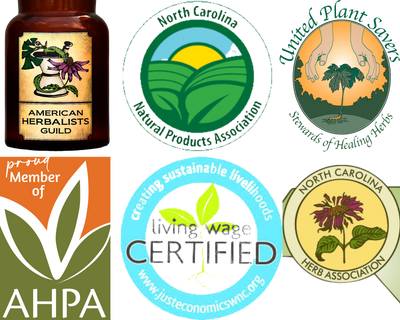The Wise Woman Tradition of Nutrition
The fundamental basis for all cellular activity in the body, such as growth, repair, reproduction, disease resistance, and maintenance, relies on the biochemical and energetic nutrients that we digest, absorb, and metabolize from the food we eat. Nutrition is essential to all forms of life. Historically, women have played a critical role in finding, growing, preparing, and storing food.
Food and Spirit
The nurturing of a newborn begins with mother's milk, which is considered sacred in earth-centered cultures. Food gathering and consumption are intertwined with sacred traditions in these cultures, although this is often disregarded and overlooked.
Healthy Eating Habits
When food options are limited, women consume what is available, as long as it provides adequate carbohydrates, protein, fats, vitamins, minerals, and clean water. Women on restricted diets (vegan, vegetarian, impoverished) may not receive sufficient nourishment and can benefit from the addition of milk, eggs, or meat. Overconsumption of sweet, salty, and fatty foods (which are readily available in refined foods) can adversely affect health due to a natural and healthy craving for these nutrients and the degradation of the food itself. This is particularly common in Western countries where the food supply is abundant and highly refined.
Protein is Abundant
Protein is the second most abundant substance in our bodies after water. It is essential for creating various components in the body, such as enzymes, antibodies, milk, skin, hair, nails, muscle, brain, heart, and organs. Our body requires twenty-two different amino acids, of which eight are considered essential nutrients. Animal-based foods contain all essential amino acids, while no single plant-based food contains them all. However, combining plant-based foods like corn and beans can provide all essential amino acids. The body requires all amino acids at once and in the correct proportion for protein synthesis. Even a temporary deficiency of one essential amino acid can slow or stop protein production. Adult women can sustain low protein diets; however, high levels of protein are necessary for children, pregnant, lactating, and menopausal women.
Fats Are Energy
Fat is a concentrated source of energy in our diet and is vital to women's health. It is present in vegetable seeds, beans, nuts, fruits, and all animal products. Many American women avoid fat, leading to vitamin E deficiency. Essential fatty acids, including linoleic, linolenic, and arachidonic fats, are essential for the body. All fats, including cholesterol, play a critical role in the formation of sex hormones, adrenal hormones, vitamin D, and bile. Low-cholesterol diets can lead to dry skin, vaginal tissues, and impede the functioning of the brain and nervous system.
The notion that saturated fats raise blood cholesterol levels and cause blocked blood vessels, strokes, and heart attacks has been prevalent since the mid-1960s. However, most researchers consider it simplistic and without scientific justification. The Framingham Heart Study found that a higher intake of total fat, saturated fat, and monounsaturated fat lowered the risk of stroke. Furthermore, high blood cholesterol levels were a risk factor for heart disease, but dietary fat and cholesterol intake were inversely correlated with blood cholesterol levels. Swedish studies show that saturated fats promote breast health, while vegetable oils like canola, safflower, corn, cottonseed, and sunflower oils promote breast cancer.
Animal fats are more stable than vegetable oils, which become rancid within days after pressing. Rancid fats promote cancer and heart disease. While hydrogenation and partial-hydrogenation slow rancidity, they create trans-fatty acids that create deposits on the blood vessels. Even unhydrogenated vegetable oils are unhealthy as they flood the body with omega-6 fatty acids, which are the primary fat component of arterial plaque, and contribute large amounts of free radicals that damage the arteries and initiate plaque deposits.

Vitamins, Minerals, and Phytochemicals
Living tissues produce vitamins, which are small organic compounds found in fresh, whole foods. Dried, fermented, or cooked foods are the best sources for absorbing vitamins, which can be either fat-soluble (A, E, D) or water-soluble (B, C). Vitamins are related enzymes that function together. For example, carotenes and carotenoids contribute to vitamin A production, tocopherols function as vitamin E, and ascorbic acid combined with bioflavonoids and carotenes form vitamin C.
Eating a healthy diet that includes whole foods provides adequate vitamins. Refined foods, such as enriched flour, lack the full complement of B vitamins and minerals found in whole grains. Synthetic vitamin supplements can help in cases of impoverishment and famine but should not replace healthy foods. Long-term use of supplements can increase the risk of health problems such as more aggressive cancers (alpha tocopherol), faster-growing cancers (ascorbic acid), and increased risk of cancer and heart disease (beta carotene).
Minerals are inorganic compounds found in all living tissues, including plants and animals, and are critical for optimal functioning of the nervous, immune, and hormonal systems, as well as muscles, including the heart. Our needs for some minerals, such as potassium, magnesium, manganese, and calcium, are significant, but our needs for trace minerals, such as selenium, iodine, molybdenum, boron, silicon, and germanium, are minuscule. However, commercial farming practices, such as overuse of chemical fertilizers, have reduced mineral content in fruits and vegetables, and refining removes what little minerals grains have.
Seaweeds and herbs are reliable sources of minerals when eaten, brewed, or infused into vinegar, rather than taken in capsules or tinctures. Some herbs, such as dandelion leaves, peppermint, red clover blossoms, stinging nettle, and oatstraw, are exceptional sources of minerals.
Phytochemicals are natural food chemicals that offer health benefits such as preventing cancer, promoting cardiovascular health, enhancing sexual functioning, increasing energy, and promoting longevity. Phytoestrogens, a class of compounds found in whole grains, beans, vegetables, and fruits, can help prevent breast cancer, osteoporosis, high blood pressure, congestive heart disease, and senility. Phytoestrogen-rich diets can also protect against the harmful effects of estrogen-mimicking chemicals in the environment and food.
References:
Price, Weston; Nutrition and Physical Degeneration; Keats Publishing, Inc., 1945
Dunne, Lavon. Nutrition Almanac, 3rd Edition. McGraw Hill, 1990.
Fallon, Sally. Nourishing Traditions Cookbook. ProMotion Publishing, 1995.
Ziegler, Ekhard & Filer, LJ. Present Knowledge in Nutrition, 7th Edition. International Life Science Press, 1996.
Bergner, Paul; The Healing Power of Minerals, and Trace Elements. Prima Publishing, 1997
Pedersen, Mark; Nutritional Herbology; Pedersen Press, (orig. 1987; republished in 1996)(7) Agriculture Handbook Book # 456: Nutritional Value of Foods in Common Units. Dover reprint, 1986. Original by the USDA, 1975.







